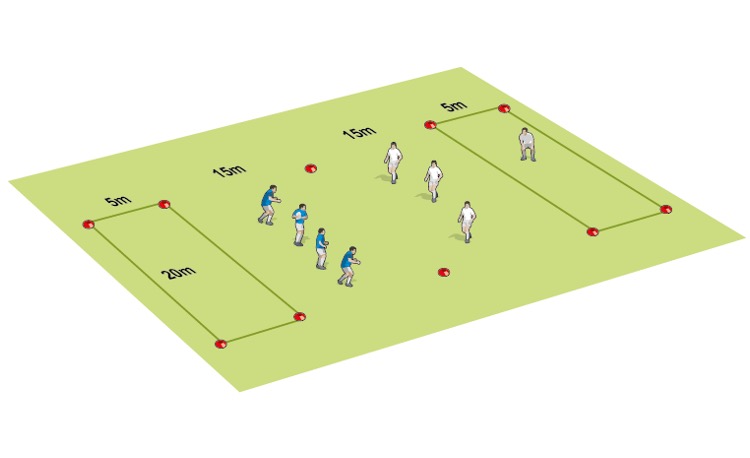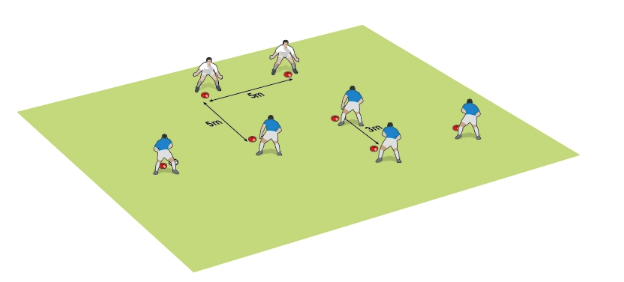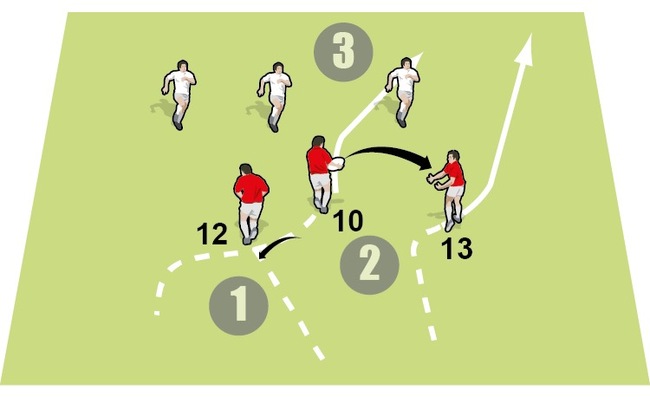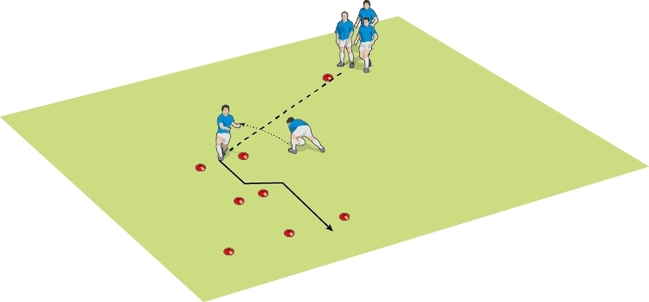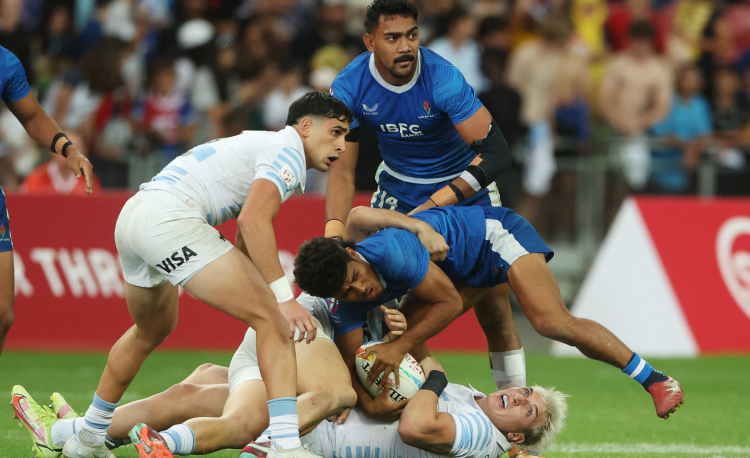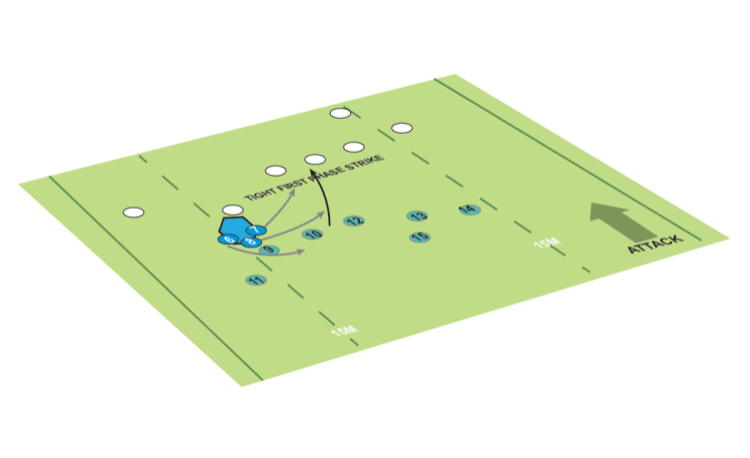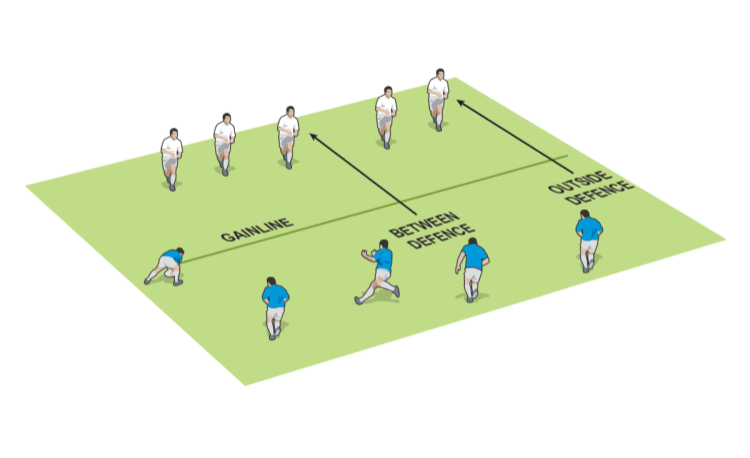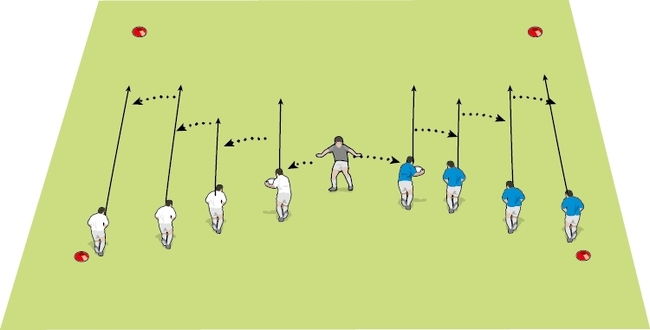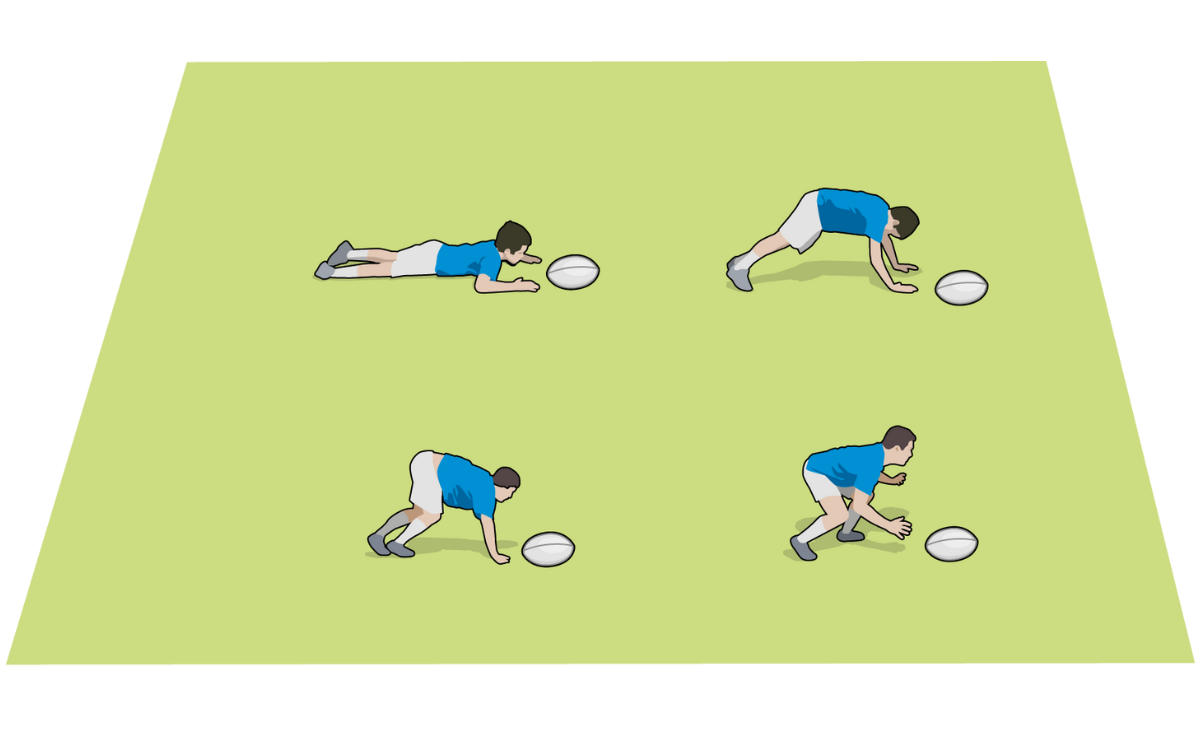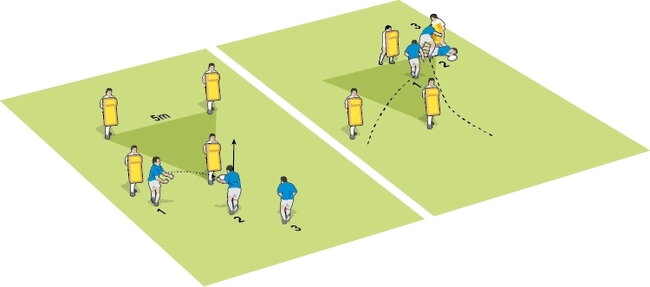Attack space inside
If a ball carrier can draw a defender and pass, they preserve some space for the next player, writes Leicester Tigers junior academy coach TOM BROCKLEBANK.

A defender must mark three spaces - the one they are occupying now, and the ones on their left and right.
If the attacker moves to the defender’s right, then the defender uses their right shoulder.
Attackers tend to run at a slight angle and with the direction of the pass from the previous breakdown or set-piece. That means defenders naturally anticipate attackers aim to run on their outside as space grows the further away from the source of the ball.

The inside shoulder is sometimes called a weak shoulder. That’s because the defender doesn’t expect the attacker to move back towards the source of the ball. In its simplest form it looks like fig 1 (above).
Done correctly, players attacking inside shoulder spaces are engaging opposition players and drawing their attention inside, which opens up space on the outside.
COACHING THE SHOULDER
Different coaches may ask their players to actively aim for the actual shoulder of the opposition player, in the hope that the tackle will be weaker and they will be able to break the tackle or be able to offload.
"Engaging opposition players and drawing their attention inside opens up space..."
However, I prefer players to aim for the space inside, not the shoulder. A better defender might make a good tackle.
Plus, attacking space increases the chance of engaging two defenders. For that reason, I prefer to use “attack the space inside” rather than “attack the inside shoulder”.
TWO WAYS TO ATTACK SPACE
There are different contexts for attacking inside shoulder spaces - let’s focus on two of the most common: as a first receiver carrying the ball for a few seconds before reaching the gain line looking to pass, and as a second receiver who is looking to take the ball close to the gain line and carry.
First receiver looking to pass
The first receiver has more time with the ball than subsequent receivers.
That player’s aim will be to engage two defenders, reduce the success of a drifting defence, and pass to a player or run through a gap.
The first step is for this player to run towards the player defending the player next to them. Typically, this will be the 10 running towards the opposition 12.

The 10 aims to engage the 12 long enough so the 12 can’t drift on to the next player (see fig 2 above).
To do this successfully, the 10 needs to be looking at the 12 to show their intent to run at them, while carrying fast with the ball in both hands to maintain run, kick, pass options.
Then, before contact, the 10 will step towards the space between the opposition 10 and 12 – attacking the inside shoulder space of the 12.
The aim is to engage both the opposition 10 and 12, opening space either side of them, to pass to the attacking 12, or for the 10 to carry through the gap.
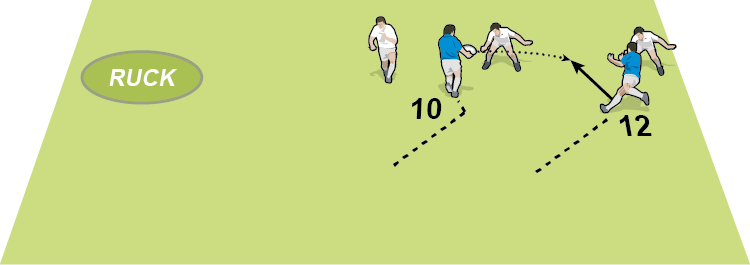
If the 12 receives the ball, their aim will then be to run at the open space inside the shoulder of the opposition 13 (see fig 3).
Second receiver looking to carry close to the gainline
The second receiver often has very little time with the ball before contact, so they need to create the opportunity to attack the space inside the shoulder with their run.
In the previous example, the 12 will be ‘in motion’ aiming to engage the opposition 13. At this point, the defence will try to drift to match - the defending 10 will be aiming to stay in line with the attacking 10, and so on.
Therefore, all players must be running at speed, using their eyes to make their intended player ‘pinch’ in on them - attacking 10’s intended player is the defending 12, and so on.
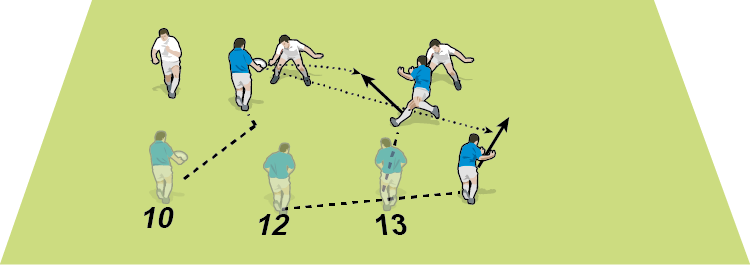
As with the attacking 10, the attacking 12 will then look to step towards the space between the defending 12 and 13 (see fig 4).
As an attacking unit
Depending on the length of your attacking line, this could lead to your third receiver (13) running at the opposition 14 and then cutting back to the vacant space in between the 13 and 14.
You can then look to make more inside shoulder space. The following common move is a perfect example:
The 10 runs the same line as 12, before a quick step towards the opposition 10-12 space, aiming to engage both players.
"All players must use their eyes to make their intended player ‘pinch’ in on them..."
The 13 runs at their opposite number, before a quick step towards the opposition 12-13 space, aiming to take advantage of other players being engaged, or to engage the opposition 13.
Meanwhile, the 12 drifts behind the 13, aiming to take advantage of space outside the opposition 13.
This provides three solid options for the attacking 10 - they can carry through the defending 10-12 space if the defending 12 has been engaged, pass to the attacking 13 if the defending 12 has been engaged, or they can pass out the back to the attacking 12 if the defending 12 has been engaged.
HOW TO COACH IT
On a basic level, this could start with a 2v2, where a ball is fed to the first receiver who aims to engage both defenders.

Primary success will be the first receiver passing to their attacking partner who scores, secondary success will be the first receiver carrying the ball between the defenders to score (see fig 5).
This can be quite easy for the defenders to read as they know what the aim of the attackers is, so you will soon need to increase the number of players (3v3, 4v3, 4v4 etc.) which creates more variables for the defence and more chance an attacking player will find space.
FUNDAMENTALS
For every player, there is a constant thread of fundamentals they must do when attacking the inside shoulder space:
- Carry the ball in two hands (if this isn’t a common expectation already)
- Run aggressively at the player outside of the player opposite them
- Scan for space: they will either engage players or they will have a space to run through
- Communicate where the space is
- Late change of direction to pull the opposition player towards them and engage the player opposite them
Related Files
Newsletter Sign Up
Coaches Testimonials

Gerald Kearney, Downtown Las Vegas Soccer Club

Paul Butler, Florida, USA

Rick Shields, Springboro, USA

Tony Green, Pierrefonds Titans, Quebec, Canada
Subscribe Today
Be a more effective, more successful rugby coach
In a recent survey 89% of subscribers said Rugby Coach Weekly makes them more confident, 91% said Rugby Coach Weekly makes them a more effective coach and 93% said Rugby Coach Weekly makes them more inspired.
Get Weekly Inspiration
All the latest techniques and approaches
Rugby Coach Weekly offers proven and easy to use rugby drills, coaching sessions, practice plans, small-sided games, warm-ups, training tips and advice.
We've been at the cutting edge of rugby coaching since we launched in 2005, creating resources for the grassroots youth coach, following best practice from around the world and insights from the professional game.
